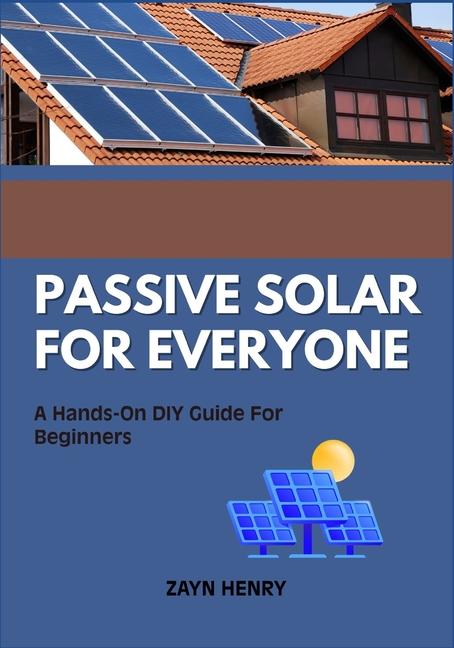Description
Passive solar design offers numerous benefits, making it an attractive option for homeowners and builders. Here are some of the key advantages:
1. Energy Efficiency:
- Reduced Heating and Cooling Costs: By using the sun's energy for heating in the winter and natural ventilation for cooling in the summer, passive solar homes require less reliance on conventional heating and cooling systems, reducing energy bills.
- Low Operating Costs: Because passive solar design minimizes the need for electricity or gas for heating, it can significantly lower monthly utility costs.
2. Environmental Benefits:
- Reduced Carbon Footprint: By relying on the sun's energy, passive solar homes reduce the use of fossil fuels and decrease greenhouse gas emissions, helping to combat climate change.
- Sustainable Living: Passive solar design contributes to sustainable living by making use of natural resources, reducing the environmental impact of the home.
3. Improved Comfort:
- Consistent Indoor Temperature: The thermal mass in passive solar homes stores heat during the day and releases it at night, maintaining a comfortable and stable indoor temperature.
- Natural Light: The design incorporates large windows, allowing for an abundance of natural light. This not only reduces the need for artificial lighting but also enhances the overall feel of the home.
4. Durability and Longevity:
- Reduced Wear on HVAC Systems: Since passive solar homes rely less on mechanical heating and cooling systems, they tend to have fewer breakdowns and require less maintenance, leading to a longer lifespan for HVAC systems.
- Better Building Materials: Passive solar homes are often built with durable materials that enhance energy efficiency and require less upkeep over time.
5. Increased Property Value:
- Attractive to Eco-Conscious Buyers: Homes with passive solar design can be highly desirable in the real estate market, particularly as sustainability becomes a higher priority for many buyers.
- Long-Term Savings: The energy-efficient design can make the property more attractive due to the potential for long-term savings on energy bills, which can increase its market value.
6. Healthier Living Environment:
- Natural Ventilation: The strategic placement of windows and vents allows for fresh air circulation, improving indoor air quality and reducing the need for mechanical ventilation systems.
- Daylight Exposure: Increased exposure to natural daylight has been shown to improve mood, productivity, and overall well-being.
7. Resilience and Self-Sufficiency:
- Reduced Dependence on the Grid: Passive solar homes reduce reliance on external energy sources, making them more resilient in times of energy shortages or grid failure.
- Energy Independence: A well-designed passive solar home can be highly self-sufficient, especially when combined with renewable energy systems like solar panels or wind power.
8. Lower Maintenance Costs:
- Fewer Mechanical Systems: By minimizing the need for air conditioning, heating systems, and electrical lighting, passive solar homes can require less upkeep and fewer repairs, saving on maintenance costs in the long run.
Overall, passive solar design not only promotes energy efficiency and sustainability but also enhances the comfort and livability of a home.
1. Energy Efficiency:
- Reduced Heating and Cooling Costs: By using the sun's energy for heating in the winter and natural ventilation for cooling in the summer, passive solar homes require less reliance on conventional heating and cooling systems, reducing energy bills.
- Low Operating Costs: Because passive solar design minimizes the need for electricity or gas for heating, it can significantly lower monthly utility costs.
2. Environmental Benefits:
- Reduced Carbon Footprint: By relying on the sun's energy, passive solar homes reduce the use of fossil fuels and decrease greenhouse gas emissions, helping to combat climate change.
- Sustainable Living: Passive solar design contributes to sustainable living by making use of natural resources, reducing the environmental impact of the home.
3. Improved Comfort:
- Consistent Indoor Temperature: The thermal mass in passive solar homes stores heat during the day and releases it at night, maintaining a comfortable and stable indoor temperature.
- Natural Light: The design incorporates large windows, allowing for an abundance of natural light. This not only reduces the need for artificial lighting but also enhances the overall feel of the home.
4. Durability and Longevity:
- Reduced Wear on HVAC Systems: Since passive solar homes rely less on mechanical heating and cooling systems, they tend to have fewer breakdowns and require less maintenance, leading to a longer lifespan for HVAC systems.
- Better Building Materials: Passive solar homes are often built with durable materials that enhance energy efficiency and require less upkeep over time.
5. Increased Property Value:
- Attractive to Eco-Conscious Buyers: Homes with passive solar design can be highly desirable in the real estate market, particularly as sustainability becomes a higher priority for many buyers.
- Long-Term Savings: The energy-efficient design can make the property more attractive due to the potential for long-term savings on energy bills, which can increase its market value.
6. Healthier Living Environment:
- Natural Ventilation: The strategic placement of windows and vents allows for fresh air circulation, improving indoor air quality and reducing the need for mechanical ventilation systems.
- Daylight Exposure: Increased exposure to natural daylight has been shown to improve mood, productivity, and overall well-being.
7. Resilience and Self-Sufficiency:
- Reduced Dependence on the Grid: Passive solar homes reduce reliance on external energy sources, making them more resilient in times of energy shortages or grid failure.
- Energy Independence: A well-designed passive solar home can be highly self-sufficient, especially when combined with renewable energy systems like solar panels or wind power.
8. Lower Maintenance Costs:
- Fewer Mechanical Systems: By minimizing the need for air conditioning, heating systems, and electrical lighting, passive solar homes can require less upkeep and fewer repairs, saving on maintenance costs in the long run.
Overall, passive solar design not only promotes energy efficiency and sustainability but also enhances the comfort and livability of a home.
Last updated on
Product Details
- Apr 27, 2025 Pub Date:
- 9798281666466 ISBN-10:
- 9798281666466 ISBN-13:
- English Language




